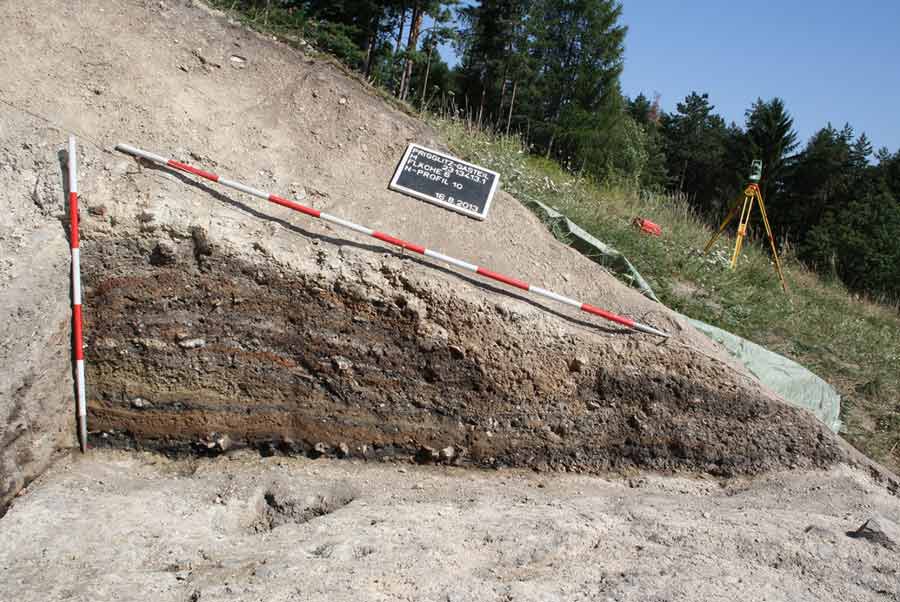Healthy, Mostly Veg, Food Was Delivered to Bronze Age Mine Workers
Bronze Age food, plant and cereal remains, from a mining site in Austria dating to the 11th - 9th century BC have been studied and the scientists found no evidence of food processing. They suspect the Bronze Age food was prepared outside the mining site and that it was delivered to the workforce. This offers new insights about specific roles and skill sets within communities in this period.

Millet grains (top rows) and lentils (bottom) are among the Bronze Age food remnants found at the prehistoric mining site in the Austrian Alps. (A. G. Heiss et al. / PLOS ONE)
Bronze Age Food: Barley Prepared Elsewhere For Miners
A new study published in the journal PLOS ONE shows that Bronze Age copper mining communities at Prigglitz-Gasteil in the Eastern Alps, Austria, were “heavily specialised and comprised both miners and craftspeople.”
The team of researchers from the Austrian Academy of Sciences found no evidence of on-site processing or preparation of food at the mining camp site. They concluded that the miners and workers would not have been able to produce their own food and relied heavily on outside food sources, while they worked the mines.
- Bronze Age Mining in Europe Dates Back Earlier than Previously Thought
- Unique Cereal Rings Were Not Made To Eat, So What Are They?
In this new study, lead author Dr Andreas Heiss and his team of colleagues examined plant remains from the Austrian Alps mining site that was radiocarbon dated to between the 11th and 9th century BC. And while many previous research projects have looked at animal-based foods this is the first to wholly investigate plant-based foods.
Evidence revealed that plant foods had been ground and dehulled before being consumed at the mining site. However, these production processes were not undertaken by the miners as none of the required tools were found, suggesting much of the site's cereal food was “processed and prepared off-site before being delivered to the miners,” according to the new paper.

How researchers imagined worker specialization in processing foods that were later delivered to the mining community in the mountains of Austria . (A. G. Heiss et al. / PLOS ONE)
Bronze Age Food Processing Specialization Revealed
The lack of tools, or evidence of processing, adds to gathering evidence that Bronze Age European communities were split into specific groups for different tasks. The paper says that the research team hope their discoveries will allow future archaeologists to use specific groups of cuisine tools in understanding how these communities lived.” And expressing how much they believe in their new techniques of analysis, they said it was “an archaeobotanical topic worthy of further consideration, beyond simple plant or animal remains”.
This particular community in the Austrian Alps were mining copper from deep within the ground and they must have traded their produce with other communities. By including “culinary artefacts into 'classical' archaeobotany,” the researchers say their study helps open the door to prehistoric cuisine a little bit further.
These new results were compared with similar analyses of other mining sites in the eastern Austrian Alps, but it is yet unclear exactly where the pre-processed Bronze Age foods were being processed that were delivered to the mining site.
In an article about the new paper in Nature the authors say, “Food is an artefact - just like an axe, a jug or a table.”

Charred remains of wild edible fruit plants from the Prigglitz-Gasteil Bronze Age mining camp including hazel nuts, crab apples and berries. (A. G. Heiss et al. / PLOS ONE)
Delivered Food Included Healthy Treats Like Nuts and Fruits
The researchers concluded that it is possible that the miners’ menu was varied because other groups studying animal remains at such sites have identified pork bones.
Furthermore, Dr Heiss and his team also found traces of lentils and a range of fruits and nuts including “hazelnuts, raspberries, strawberries and crab apples that are believed to have grown nearby,” wrote the scientist. All of these are high-carbohydrate foods, which means whoever was controlling the meal schedule knew how to power up a workforce.
- The Incredible World of Painted Skulls and Bone Houses
- Research Traces Cannabis Plant Origins to the Tibetan Plateau 28 Million Years Ago
It was with more specialized diets that mining and agriculture intensified across Europe. According to Khana Academy this had “important consequences for social organization.” Larger healthier groups gave rise to new challenges and people required more sophisticated systems of social administration.
Agricultural settlements became villages, then cities, city-states, and states, and specialized labor gave rise to distinct social classes. This in turn enabled creative and innovative developments which required more complex systems of record-keeping. Hence, it was delivered meals that took us from the mines to a writing and record keeping.
Top image: The excavation of the mining camp in the Austrian Alps where the “delivered and pre-processed” Bronze Age food remnants were found. Source: A. G. Heiss et al. / PLOS ONE
By Ashley Cowie



















